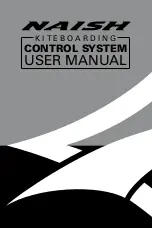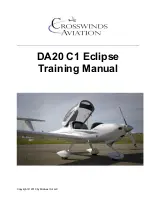
ARRown
7-2
If the vacuum gauge registers lower than 5" Hg + .1 0" Hg at 2000 RPM, the
following items should be checked before flight:
a.
Common air filter, could be
dirty
or restricted.
b. Vacuum lines, could be collapsed or broken.
c.
Vacuum pump, worn.
d. Vacuum regulator, not adjusted correctly. Tue pressure, even though
set
correctly, can read lower under two conditions:
1. Very high altitude, above 12,000 feet.
2. Low engine RPM usually on approach or during training maneuvers.
This is normal and should not be considered a malfunction.
14. The rudder pedals are suspended from a torque tube which extends across the
fuselage. The pilot should become familiar with the proper positioning of his feet on
the rudder pedals so as to avoid interference with the torque tube when moving the
rudder pedals or operating the toe brakes.
15. The shape of the wing fuel tanks is such that in certain maneuvers the fuel may move
away from the tank outlet. If the outlet is uncovered, the fuel flow
will
be
interrupted and a temporary loss of power may result. Pilots can prevent inadvertent
uncovering of the outlet by avoiding maneuvers which could result in uncovering the
outlet.
Extreme running turning takeoffs should be avoided as fuel flow interruption
may occur.
Prolonged slips or skids which result in excess of 2000 feet of altitude loss, or
other radical or extreme maneuvers which could cause uncovering of the fuel outlet
must be avoided as fuel flow interruption may occur when tank being used is not full.
16. In an effort to avoid accidents, pilots should obtain and study the safety related
information made available
in
FAA publications such as regulations, advisory
circulars, Aviation News, AIM and safety aids.
OPERATING TIPS
REVISED: December S, 1975
V
N16422 POH
















































